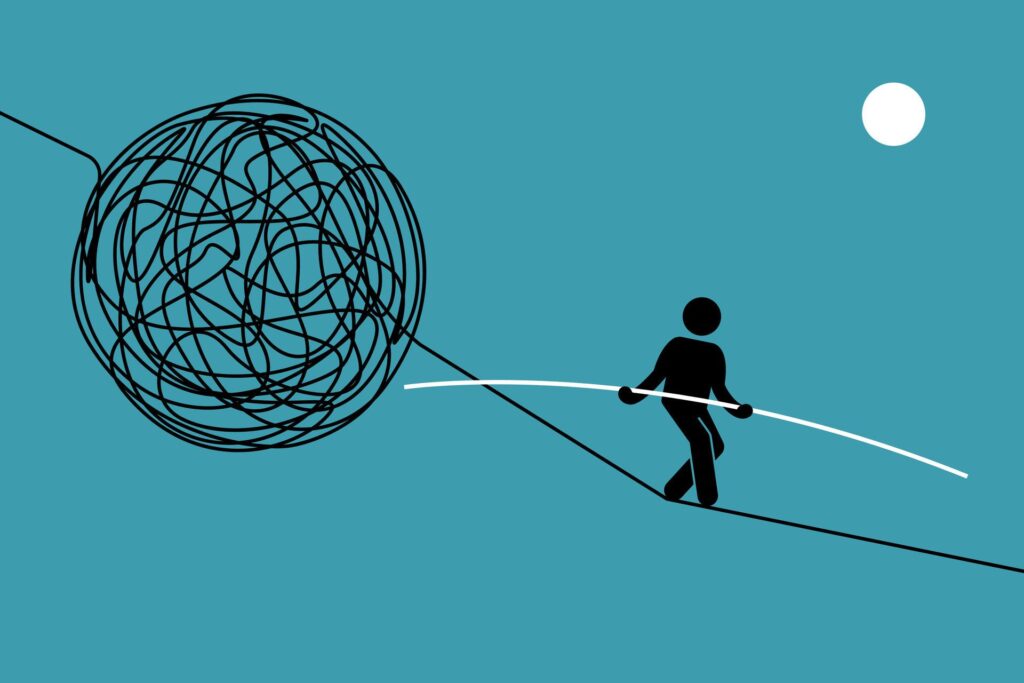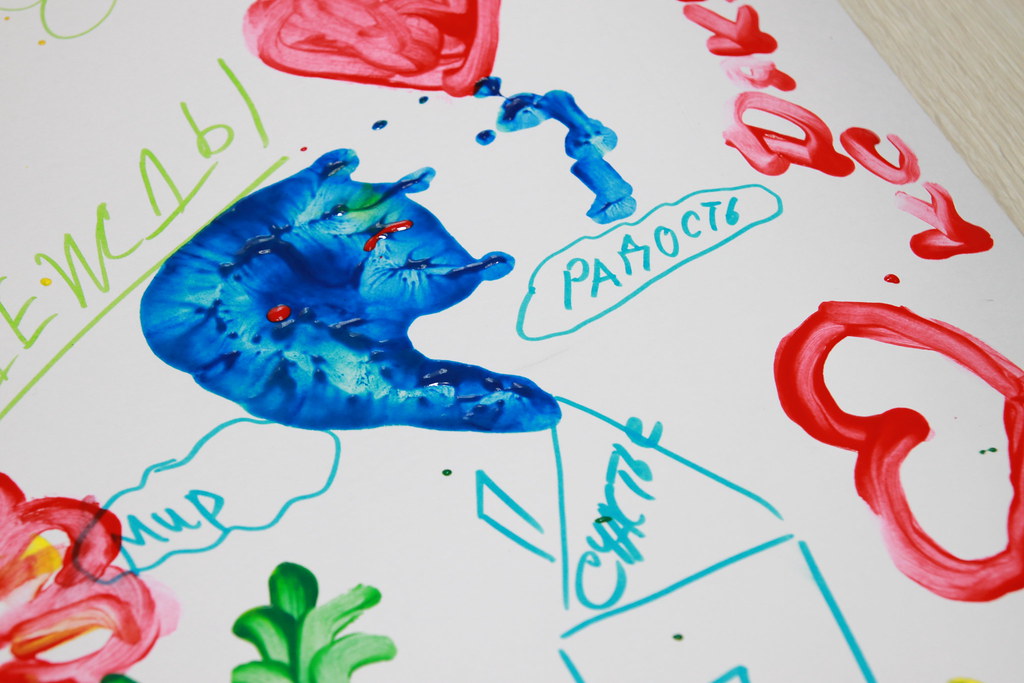
In an increasingly interconnected world, where the lines between personal and professional life often blur, many individuals find themselves grappling with persistent stress, overwhelm, and even burnout. The relentless demands of work, social expectations, and personal responsibilities can erode our sense of well-being, leaving us feeling stretched thin and perpetually on the verge of exhaustion. It’s a common narrative, as highlighted by expert observations that clients frequently wonder why they are feeling stressed all the time, often under the guise of ‘handling everything well despite being busy.’ Yet, deeper introspection often reveals a significant underlying issue: a profound lack of clear personal and professional boundaries. This absence or vagueness of boundaries can lead to key priorities being sidelined, impacting optimal performance, and ultimately, diminishing personal happiness.
Boundaries, at their core, serve as essential guidelines that help maintain a healthy level of separation between the various aspects of our lives. They are not rigid walls designed to isolate us, but rather flexible frameworks that define expectations, set limits, and foster respectful relationships – both with ourselves and with others. By consciously establishing these limits, we empower ourselves to navigate the complexities of modern life with greater intention, ensuring our well-being remains a priority amidst external pressures. The journey of creating boundaries is a deeply personal one, requiring self-awareness, reflection, and assertiveness, yet its rewards are transformative, leading to a more independent, satisfying, and fulfilling existence.
This in-depth exploration will delve into the multifaceted world of boundaries, offering insights rooted in psychological understanding and practical advice for implementation. We will uncover why setting boundaries is not merely a defensive mechanism but a powerful act of self-care and personal growth. From defining what boundaries truly are, to understanding their diverse forms and the profound benefits they confer, we will equip you with the knowledge and strategies to assertively approach boundary-setting, ensuring you cultivate a nurturing environment where you can thrive as an individual while fostering healthy, reciprocal relationships. Join us as we unlock the art of saying ‘no’ and embrace the profound power of setting clear boundaries in both your personal and professional spheres.

1. **What Are Boundaries? Defining the Essential Lines for Well-being**At its most fundamental level, a boundary is a limit or line that you establish for yourself in your interactions with others. These limits delineate what behaviors are acceptable and what you are willing to tolerate, acting as personal guidelines that protect you from being taken advantage of or harmed. Essentially, boundaries provide a crucial framework for maintaining control over your life by clearly communicating your needs and expectations to those around you. They are not about creating distance or isolating yourself, but rather about fostering an environment where mutual respect and understanding can flourish.
Healthy boundaries are critical for safeguarding our physical and emotional well-being. They empower us to define our own needs, values, and beliefs, setting clear parameters on what is acceptable and unacceptable behavior from others. By establishing these clear lines, we actively protect ourselves from potential exploitation, prevent both physical and emotional harm, and cultivate a deeper sense of self-respect and self-worth. It’s a proactive step towards ensuring that our personal space, energy, and values are honored in all relationships.
These essential limits manifest in various forms, encompassing physical, emotional, mental, and time-related aspects. They are dynamic tools, not rigid laws, meaning they can and should adapt to different contexts and evolve with our personal growth. The act of setting boundaries is a vital component of self-care, consciously prioritizing our own needs and ensuring that the decisions we make genuinely reflect what is best for us. While it may require practice and assertiveness, developing this skill is a powerful pathway to long-term health and overall well-being.

2. **Personal Boundaries: Cultivating Your Space for Emotional, Physical, and Mental Health**Personal boundaries are the intricate sets of guidelines that dictate how we interact with others, how we care for ourselves, and critically, how we allow others to treat us. They are the invisible yet powerful shields that safeguard our emotional, physical, and mental well-being. Without these boundaries, we risk sacrificing our personal time, energy, and peace of mind, often leading to feelings of resentment and burnout. Defining these personal limits is paramount for maintaining balance and ensuring our needs are consistently met within our relationships.
Consider the common scenario of constantly checking work emails or taking work calls during evenings and weekends. While seemingly productive, this habit significantly erodes time dedicated to family and friends, signaling a lack of presence and blurring the lines between work and personal life. As a consequence, being perpetually ‘on call’ often leads to burnout, induces personal stress, and undeniably strains personal relationships. Defining clear personal boundaries helps in explicitly setting aside dedicated time for self-care, family, and social engagements, preventing external demands from encroaching upon these vital spheres.
These dedicated times allow for activities such as sports, relaxation, engaging in hobbies, and personal development – all crucial for recharging, reducing stress, and maintaining a healthy mindset. Furthermore, personal boundaries extend to emotional interactions. Imagine an acquaintance who consistently crosses your emotional boundaries with insensitive remarks. By establishing and clearly communicating your personal boundaries, you can express how their words affect you, thereby fostering a healthier and more respectful relationship built on mutual understanding and empathy. It’s about creating an inner sanctuary where your emotional energy is protected and valued.

3. **Professional Boundaries: Safeguarding Your Career and Preventing Burnout**In the professional realm, boundaries are equally, if not more, critical for cultivating a healthy work environment and ensuring that work-related pressures do not spill over into your personal life. They provide the necessary structure to manage workloads, maintain focus, and protect precious personal time, ultimately preventing the pervasive issue of burnout. Without these clear delineations, employees can find themselves overburdened, their contributions undervalued, and their well-being compromised, as exemplified by cases where individuals, despite believing they are handling everything, find their key priorities sidelined due to a lack of clear limits.
One common challenge arises in collaborative work environments where colleagues frequently seek assistance outside of established working hours. Without clear professional boundaries, your personal time becomes susceptible to compromise, leading to heightened stress and fatigue. By explicitly setting boundaries around your working hours and designated breaks, you clearly communicate your availability and your capacity for work outside these times. This assertiveness not only protects your personal life but also encourages a more organized and respectful workflow among team members, ensuring that tasks are managed efficiently within appropriate timeframes.
Another vital aspect of professional boundary setting involves managing workload and priorities. Many professionals, eager to demonstrate commitment, accept additional tasks even when feeling overwhelmed. This lack of boundaries can quickly lead to burnout and diminished productivity. By clearly defining what you can realistically handle and exercising the crucial ability to say ‘no’ when necessary, you maintain a healthy and sustainable level of productivity. Moreover, in today’s digital age, establishing digital boundaries—limiting constant email checking, WhatsApp messages, and work calls during personal hours—is essential to prevent work from intruding and emotionally draining personal time, creating a healthier separation for overall well-being.

4. **The Diverse Spectrum: Understanding Physical, Emotional, and Mental Boundaries**Boundaries are not monolithic; they operate across different experiential levels, acting as relevant social modifiers. Understanding this diverse spectrum—physical, emotional, and mental boundaries—is crucial for a comprehensive approach to personal well-being and healthy interactions. Each type addresses distinct aspects of our lives and relationships, demanding unique considerations and assertive communication to be effectively established and maintained.
Physical boundaries, for instance, pertain to our personal space and the extent of physical touch we are comfortable with. This includes the physical distance we maintain between ourselves and others, as well as the right to solitude when needed. It also encompasses the level of intimacy we are willing to share and the conditions under which a relationship can progress to different levels. Furthermore, physical boundaries extend to our possessions and resources, asserting our right to decide on their shared status. These boundaries ensure our bodily autonomy and personal space are respected, preventing discomfort or intrusion.
Emotional boundaries, on the other hand, relate to our inner world of feelings and sensitivities. They refer to our freedom regarding emotional expression, ensuring we can articulate our feelings without fear of judgment or manipulation. Crucially, they also protect us from emotional manipulation and abuse, preventing others from unduly influencing our emotional state or exploiting our vulnerabilities. These boundaries help us manage how much emotional energy we extend to others and shield us from interactions that are emotionally draining or toxic, fostering an environment where our emotional well-being is prioritized.
Mental boundaries safeguard our thoughts, beliefs, and intellectual property. They underscore our right to hold any personal values, beliefs, and opinions, which may include cultural, religious, spiritual, or moral elements, without coercion or dismissal. This category also encompasses our right to control how our time is used and our freedom to pursue our own goals and aspirations without undue interference. By establishing mental boundaries, we protect our cognitive autonomy, ensuring that our intellectual space and personal convictions are respected, allowing us the clarity to focus on what is truly meaningful to our individual journey.

5. **The Profound Benefits: Why Setting Boundaries Transforms Your Life**The act of setting, monitoring, and maintaining healthy social boundaries is a transformative practice that allows individuals to lead a significantly better version of their lives. Far from being restrictive, boundaries create a nurturing environment where personal growth can flourish, while simultaneously cultivating healthy and sustainable relationships with others. The benefits extend across psychological, relational, and practical dimensions, fundamentally empowering individuals to take control of their well-being and achieve their most significant goals.
One of the most immediate and impactful benefits is a remarkable increase in self-esteem and self-confidence. When we articulate and uphold our boundaries, we send a powerful message to ourselves and others that we value our needs, time, and emotional energy. This assertion of self-worth naturally boosts confidence and fosters a stronger sense of identity. Furthermore, it significantly enhances our assertiveness level, transitioning us from passive or aggressive mindsets to a more balanced and effective assertive stance in our interactions, thereby reducing the likelihood of being taken advantage of.
Beyond personal psychological benefits, boundaries are instrumental in fostering healthy, non-toxic relationships. Clear limits create mutual respect and understanding, reducing misunderstandings and preventing the build-up of resentment that often arises from unspoken expectations or over-extension. In the workplace, this translates to greater productivity, as boundaries help minimize distractions and prevent overcommitment, allowing individuals to focus more intently on their core tasks. Moreover, setting boundaries provides more resources—especially time—to pursue personal and professional goals, leading to increased focus on what truly matters and a heightened sense of independence. Ultimately, boundaries bring increased clarity, helping us discern meaningful engagements from those that waste our invaluable resources, thereby paving the way for a more fulfilling and authentically driven life.
Read more about: The Bedding Bailout: One Sleepover Horror Story That Proves Why Clean Sheets Are the Ultimate Escape Plan

6. **The First Steps: Identifying Your Needs and Values for Effective Boundary Setting**The journey to effective boundary setting begins with a critical introspective phase: identifying your personal needs, values, and limitations. This self-awareness is the bedrock upon which all healthy boundaries are built. Without a clear understanding of what truly matters to you, what energizes you, and what depletes you, it becomes impossible to define the protective limits necessary for your well-being. It’s an essential moment of reflection, as you cannot set and maintain social boundaries unless you first define them for yourself.
Begin by taking time to reflect on your core values, priorities, and inherent limitations. For instance, if spending quality, uninterrupted time with your family is a deeply held value, this insight can guide you to establish a boundary that ensures a specific amount of dedicated time for them each day, free from external intrusions. This process involves listing your values—such as honesty, integrity, peace, or joy—and your personal and professional goals. It also extends to identifying your extended purpose, considering the broader impact you wish to have, and ensuring your daily actions and goals align with this larger vision. This foundational work helps to ensure that your boundaries are not merely inherited social artifacts, but are deeply rooted in your inner, personal motivations.
Further, it is crucial to learn and consider your social rights, both those with a legal basis and those that are social conventions indicative of healthy interactions. Question whether any of your existing values, goals, or even your purpose are socially inherited rather than driven by genuine inner desire. What might be valued by your family or societal norms may not necessarily be relevant or beneficial for your personal journey. Finally, consider each of the main contexts—physical, emotional, and mental—and begin to structure your boundaries around them. Ask yourself: what feels comfortable or uncomfortable in social interactions? What is acceptable or unacceptable? What are your deal-breakers? Identifying these points of absolute non-negotiation is vital, as they determine at what point, if all other negotiations fail, you would rather disengage from a social connection, especially in abusive contexts where a single infringement might be enough to break a bond.

7. **Articulating Your Limits: The Power of Clear and Assertive Communication**Once you have a clear understanding of your personal needs, values, and the boundaries you wish to establish, the crucial next step is to communicate them clearly and assertively to others. It is a common misconception to expect others to instinctively understand your limits; effective boundary setting requires direct and open dialogue. Being assertive means standing your ground respectfully, without resorting to passive hints or aggressive demands, and making sure your message is heard and understood.
When communicating your boundaries, it’s vital to be direct and explicit. Talk openly about your limits with those who will be affected by them, whether in personal or professional contexts. Use “I” statements to express how you feel and what you need, for example, “I need some time to myself after work to recharge.” Be specific and avoid vague language, ensuring there is no room for confusion. Name the boundaries clearly and, where appropriate, articulate the deal-breakers and potential consequences of their infringement. This is not about exerting dominance but about conveying the profound importance of certain aspects to your well-being and how boundary breaches would modify your interest and engagement in the specific interaction.
Managing your emotions during this communication is equally important. It is essential to remember that you should feel no guilt when asking for your rights to be respected; protecting yourself and creating a conducive environment for your goals is a legitimate act of self-care. Do not allow others to manipulate you into feeling like ‘the bad guy’ simply for asserting your needs. Furthermore, do not fear rejection or the other person’s reactions. People who truly care will endeavor to understand your perspective and respect your boundaries. If you convey your message in a direct, non-aggressive manner, you are entitled to express it openly, and their reactions are ultimately their responsibility to manage. Be aware of ‘auto-injunctions’ or attempts by others to make you renounce your limits by labeling you as unreasonable; identifying these cognitive distortions is key to maintaining your resolve. Finally, take responsibility for your limits, understanding that they may trigger various outcomes, and be prepared to be okay with the reasonable consequences that may arise from upholding them.
The journey into boundary mastery extends beyond initial definitions and communication; it requires ongoing vigilance, strategic refinement, and deep commitment. As individuals assert their needs, they encounter advanced techniques crucial for sustaining these vital protective frameworks. This section will explore the transformative power of ‘No,’ the imperative of consistency, the wisdom of adapting boundaries, and the critical role of self-care and support. We will also address common challenges and underscore the reciprocal importance of respecting others’ limits, fostering a harmonious, assertive approach.

8. **The Power of ‘No’: Mastering Assertive Refusal for Well-being**Saying ‘No’ is one of the most powerful tools in effective boundary setting, consciously protecting your invaluable time and energy. It affirms existing commitments and prioritizes well-being, safeguarding your capacity to engage with what truly matters. This assertive refusal directly prevents overwhelm and burnout, crucial for personal happiness and mental health.
For professionals, the ability to say ‘No’ is paramount for managing workloads and maintaining optimal productivity. Many accept additional tasks despite feeling stretched thin, leading to unsustainable workloads and declining performance. Clearly defining what you can realistically handle ensures a healthy, sustainable level of productivity, preventing chronic stress.
Beyond professional demands, judicious use of ‘No’ is a profound act of self-care. It allows setting realistic expectations, ensuring your time is dedicated to rejuvenating activities. Respectfully declining requests conflicting with personal boundaries honors your needs for rest, development, or quality time. This practice creates a conducive environment for your goals, signaling that your well-being is a legitimate priority.
9. **Strategies for Consistency: Reinforcing Your Boundaries with Unwavering Resolve**Establishing boundaries is a strong initial step, but their true power is unlocked through consistent enforcement. Consistency builds trust in your boundaries, both by others and by yourself. Allowing a boundary to be crossed intermittently sends confusing “mixed messages,” signaling uncertainty and inviting others to test your limits, making them harder to maintain.
Inconsistency directly impacts the consequences you’ve stated for infringements. Failing to activate a declared outcome communicates a lack of seriousness about your rights. This undermines assertiveness and leads to perpetual boundary challenges. It’s about demonstrating integrity; your boundaries, though flexible, should never be permeable or easily broken by inconsistent application.
Cultivating unwavering consistency benefits from establishing routines that reflect and reinforce your boundaries. For instance, a clear “switch-off” routine for work-from-home scenarios dedicates time for relaxation or hobbies, mentally transitioning away from work. Such practices build a habit of honoring your limits, reducing external intrusion and protecting your emotional and mental space.

10. **Adapting Your Framework: Reassessing and Modifying Boundaries for Evolving Needs**Boundaries are dynamic tools, not rigid laws, designed to adapt and evolve with personal growth and changing life circumstances. What served well previously may become inefficient or detrimental now. Regularly reassessing your boundaries is vital, recognizing that what works for others or yesterday may not work today. Flexibility ensures boundaries remain relevant, supportive, and effective.
As you gain new experiences or embrace different roles, your values and limitations naturally shift. A boundary around social availability, once appropriate, might now need modification to protect energy due to new demands. This ongoing evaluation involves asking: “Are my boundaries still serving my highest good?” This introspection prevents boundaries from becoming inherited artifacts that no longer resonate.
Keeping an open mind and embracing flexibility in relationships is paramount. Responsive to internal shifts and external changes, rather than adhering blindly to outdated rules. If unexpected circumstances arise, allowing grace to temporarily adjust boundaries reduces stress. This adaptive approach ensures boundaries are living entities, continually shaped for individual growth, health, and happiness.

11. **Evolving Your Boundaries: Strategically Adding New Rules and Eliminating the Outdated**As our lives unfold with new experiences and insights, our boundary “collection” must evolve. This dynamic process involves modifying existing limits, strategically adding new rules, and eliminating those that no longer serve. When encountering novel situations or gaining deeper self-understanding, fresh guidelines protect our well-being and maintain congruence between internal and external interactions.
Once new boundaries are identified, clear communication is indispensable. Articulating these limits to affected individuals prevents misunderstandings and unintentional infringements. Direct and assertive communication ensures social contacts are aware of evolving parameters, fostering mutual respect. This transparency is a cornerstone of healthy, adaptive relationships.
Equally important is the courage to eliminate boundaries that have become inefficient or detrimental to growth. Dragging outdated elements creates friction and consumes emotional energy. Releasing obsolete rules streamlines your boundary system, ensuring it is lean, effective, and aligned with your current life. This also necessitates updating inner beliefs for holistic congruence.

12. **Overcoming Challenges: Navigating Pushback, Guilt, and the Fear of Conflict**The path to effective boundary setting often involves significant internal and external challenges. “Pushback from others” is common, as those accustomed to relying on your lack of boundaries may resist new limits. This resistance, often stemming from habit, requires standing firm in your resolve; boundaries are necessary for your well-being despite external reactions.
“Guilt” is another pervasive internal challenge, particularly for people-pleasers. Saying ‘no’ can evoke discomfort or fear of rejection. Recognize “auto-injuctions”—attempts to make you renounce limits by labeling you unreasonable. Identifying these cognitive distortions is key. Feel no guilt when asking for rights; this is legitimate self-care, enhancing assertiveness.
The “fear of conflict” also looms large, making difficult conversations intimidating. However, these discussions are necessary and lead to healthier relationships. Practice saying ‘no’ respectfully and assertively, without over-explaining. Your message, conveyed directly, is entitled to expression; others’ reactions are their responsibility. Seeking support from trusted friends or therapists offers strength.

13. **Leveraging Self-Care and Support: Building a Robust Foundation for Boundary Maintenance**Maintaining boundaries, especially during stressful periods, requires steadfast commitment to well-being and strategic use of support. Prioritizing self-care is fundamental fuel for upholding limits. This means making time for rejuvenating activities like exercise, meditation, or quality time with loved ones. These practices replenish emotional and mental reserves, increasing resilience against pressures that erode boundaries.
Establishing consistent routines effectively embeds boundaries into daily life. Routines act as tangible manifestations, reinforcing limits through habit. For instance, a clear “switch-off” routine for work-from-home dedicates post-work hours to personal hobbies. Such routines create separation, making boundary maintenance easier without constant conscious effort, preventing work from intruding.
No one navigates boundary complexities in isolation. Actively seeking support from friends, family, mentors, or coaches provides invaluable guidance and accountability. Discussing struggles and seeking advice offers fresh perspectives, validates efforts, and strengthens resolve. An objective viewpoint or empathetic ear is crucial for re-establishing conviction when faced with doubt.
Practice “self-compassion” throughout this journey, recognizing it’s okay to face difficulties and adapt boundaries when necessary. Life is unpredictable; temporary adjustments to limits may be needed. Allowing this flexibility, without guilt, is critical for reducing stress and maintaining overall well-being. Being kind to yourself fosters a sustainable and healthy approach to self-management.

14. **The Reciprocal Dance: Fostering Harmonious Interactions by Respecting Others’ Boundaries**True mastery of boundary setting encompasses the reciprocal practice of respecting others’ boundaries. For harmonious interactions to flourish, a delicate balance must exist between advocating for your rights and honoring the rights of those around you. This mutual respect forms the bedrock of trust and understanding, transforming relationships into genuine connection and empathy.
Understanding the interplay between self-assertion and respect for others is crucial for an assertive mindset. Passive individuals respect others’ boundaries but neglect their own. Aggressive individuals demand respect but disregard others’ limits. The assertive individual ensures both their rights and others’ are equally considered, fostering equitable exchanges and recognizing inherent worth.
To effectively respect others’ boundaries, active listening and attentive observation are excellent starting points for cues. However, direct communication is the most unequivocal method. If unsure, “ask them directly.” This proactive, respectful inquiry clarifies needs and models open communication, removing ambiguity and preventing unintentional infringements, cultivating deeper trust.
An ending paragraph of the article.
Ultimately, boundaries are not intended to isolate or create rigid social environments. Rather, when used reasonably and reciprocally, they filter out detrimental interactions, linking you only to meaningful, nurturing contexts and relationships. By mastering setting and respecting boundaries, we construct a life intentionally crafted—of greater independence, satisfaction, and profound fulfillment. This journey empowers us to build a foundation for sustained personal growth and truly enriching connections, paving the way for a healthier, happier existence where genuine respect forms the core.




